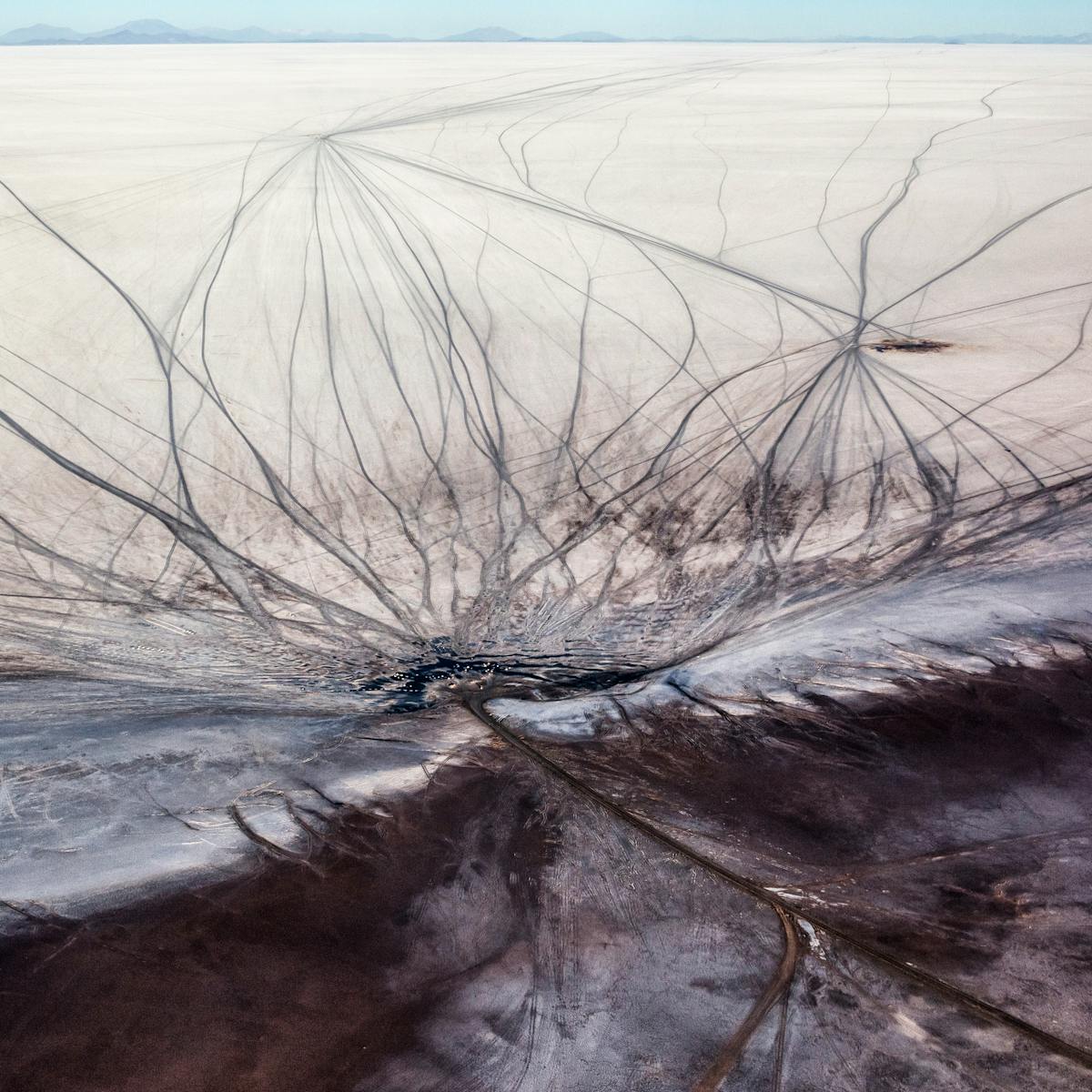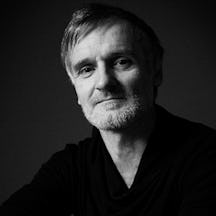Laura Grace Simpkins spent a few happy weeks with a new job in a new city in 2020, but guilt about lithium mining meant she’d started hiding her bipolar diagnosis. Then the Covid-19 pandemic left her suddenly out of work and living back with her parents. Laura now had time to restart her research into her medication, but was she mad to continue?
Conflicted and confused about lithium
Words by Laura Grace Simpkinsphotography by Matjaž Krivicaverage reading time 6 minutes
- Serial

At the beginning of 2020 I moved out of my parents’ house and found a job at a boutique cake shop in a nearby city. I’d finally admitted (to myself) that I got too restless and distractable working sit-down office jobs. Cake life was the life for me.
The lithium tremor only became more obvious when I attempted some ill-fated latte art or blasted knives with boiling water in order to cut with Pythagorean accuracy slices of four-tired sponges dripping in chocolate mirror glaze and garlands of freshish fruit. This time I didn’t tell anyone why; I didn’t announce my bipolar so unthinkingly, the way I had done before. I kept it closer to my chest because I was conflicted and confused about lithium.
Although the tremor was unmissable, the bustle of a new routine made it relatively easy to distract myself from it. Then the coronavirus arrived. I lost my job, income and accommodation, and, after just six precious weeks of adulthood, I reluctantly moved back home.
Like many during the pandemic with nothing to do, I revisited an old hobby. Of course, my old hobby was investigating lithium.
Like many during the pandemic with nothing to do, I revisited an old hobby. Of course, my old hobby was investigating lithium. I still wasn’t sure what to make of it. If no one had worried about the environmental side effects and devastating cost to Indigenous lives and livelihoods before, maybe I was guilty of making it all up, or of seeing problems where there weren’t any. I was mad after all – certifiably. Ergo, I did what’s expected when we try to demonstrate rationality: I crunched the numbers.
My own need for lithium, though it sounds small (1 kg every three years), isn’t when scaled up to include everyone who takes it. In 2019, 86,000 metric tonnes of lithium were mined. According to some sources, up to 5 per cent of that was for medication. That’s 4,100 metric tonnes of lithium for those with bipolar disorder, according to my dodgy calculations. Which is a lot. To extract it, 8.2 billion litres of water would be needed. Here was evidence I wasn’t entirely losing it.
I sent earnest questions to the psychiatrist I’d seen at Oxford and my doctor asking whether they had considered the socio-environmental side effects of lithium. My psychiatrist replied: “These are interesting questions; I’ve not thought about them before if I’m entirely honest.”
Frankly, I was unsurprised and stunned in equal measure. In a follow-up, the psychiatrist said, “I’d have thought lithium for batteries is more of a concern.”
When I read that, I felt ever so slightly patronised – and frustrated. My basic arithmetic had demonstrated that lithium mining for medication was by no means insignificant. At least I heard from the psychiatrist: my doctor never wrote back.
I knew I was fortunate to have a doctor and be seen by a psychiatrist; that my diagnosis of bipolar disorder, as well as my access to lithium, relied on a specific set of privileges. Institutional racism within the UK’s mental health services has been well documented. A major 2017 report by the government concluded that Black people were less than half as likely to be treated for mental or emotional problems than their white British counterparts.
Whether I like it or not, my health, the health of one white person who lives in the UK, is automatically prioritised over many others with bipolar symptoms in the same country, and over an entire salt flat and its inhabitants 6,000 miles away.
When I tried to calmly point out the problematic underpinnings of my privilege with (white) medical professionals, it was implied I was overacting. Everything was actually rosy.
Psychiatric proselytising
In ‘Bipolar Expeditions’, anthropologist Emily Martin (who “lives under the description of manic depression” herself) explains that bipolar disorder as a diagnosis, like many other mental health conditions, is culturally constructed as much as it is biologically and genetically. Martin is not saying that symptoms of bipolar disorder are not real. Rather, that how we interpret those symptoms, and how we link them together into a particular diagnosis, is shaped by societal attitudes and expectations.
Martin argues that bipolar disorder and capitalism share a “manic style”, though the mania exhibited by each of them is “certainly not the same”. While Martin leaves out discussions of the environment in her book, it struck me that “green capitalism” – the assumption that corporations and the market are the best tools we have for responding to and managing the climate crisis – exudes this “manic style” too.
As far as I was concerned, mining for batteries and mining for medication were one and the same. Both were predicated on the (neo)colonial logic of extractivism: rich countries in the Global North merrily trashing those in the Global South for the health of their people and their planet, without stopping to think about the consequences. This also chimed with the “anthropocentric mania” that philosopher Timothy Morton writes about in ‘Dark Ecology’.
Mining for batteries and mining for medication were one and the same. Both were predicated on the (neo)colonial logic of extractivism.
Everywhere I looked, I saw signs of psychiatry’s growing mania for lithium, as if it were again a cure-all-ills kind of tonic. I kept stumbling across people proselytising about several studies of populations in Greece, Japan, America and Australia, which indicate that lithium, when added to tap water, might alleviate depression and lower suicide rates.
In an op-ed for the New York Times, psychiatrist Anna Fels fervently asks, “Who knows what the impact on our society would be if micro-dosing lithium were again part of our standard nutritional fare?”
The studies Fels cites choose to ignore their subjects’ socio-economic and political contexts. One conducted during Greece’s financial collapse in 2008 makes no attempt to ponder why people would be depressed or suicidal in the first place. The same studies seemingly have no qualms with the environmental side effects their purported solution would cause, both at home, in domestic waste water, and in other countries.
What Fels actively welcomes reminded me of the mandatory ingestion of the happiness drug ‘Soma’ in Aldous Huxley’s 1932 novel ‘Brave New World’. At the pop of a panacean pill, we’d be able to enjoy an engineered, lithified numbness towards personal and collective crises. No longer would I have to worry about the Salar de Uyuni, churned up, caustic and lifeless, nor the parade of eschatological events soon to follow: wildfires and floods and freak storms and famines.
It would almost be like none of it was really happening. Almost.
About the contributors
Laura Grace Simpkins
Laura Grace Simpkins writes and performs about herself, madness and death. Her writing has been published by the Guardian, New Scientist and the British Medical Journal’s Medical Humanities, as well as broadcast on BBC Radio. She is currently working on her first book.
Matjaž Krivic
Matjaž Krivic is a documentary photographer capturing stories of people and places, primarily focusing on environmental issues. For over 25 years he has covered the face of the earth in his intense, personal and aesthetically moving style that has won him several prestigious awards. The past six years he has been immersed in the visual documentation of the lithium industry and also how companies and even countries are essentially washing away the climate sins of the past to create a greener and sustainable future.

